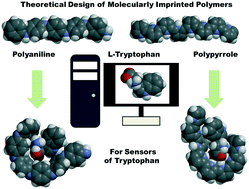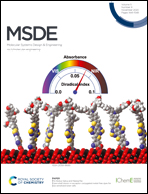Theoretical design of molecularly imprinted polymers based on polyaniline and polypyrrole for detection of tryptophan
Abstract
Creation of molecularly imprinted polymers (MIPs) as supramolecular systems with tailor-made binding sites complementary to template molecules in shape, size and functional groups is an important task for the analytical, physical and theoretical chemistries. However, the knowledge available on the theoretical study of MIPs as host–guest recognition systems is limited. In this study, combined Monte Carlo and density functional theory methods were applied to study the polypyrrole and polyaniline-based MIPs for detection of L-tryptophan. Moreover, the reduced, oxidised and protonated forms of polypyrrole and polyaniline were employed for theoretical simulations. Flexibility, charge density of these polymer chains and intermolecular interactions between the hosts and L-tryptophan as a guest were evaluated. Based on these theoretical computations, insights into the applications of piezoelectric and electrochemical sensors for these MIPs were submitted. This low computational cost method is extremely promising to provide evidence of the formation of MIPs and to reveal their properties. Finally, the remaining challenges and future perspectives to accelerate the development in silico of similar MIPs with a wide range of applications have been introduced.



 Please wait while we load your content...
Please wait while we load your content...